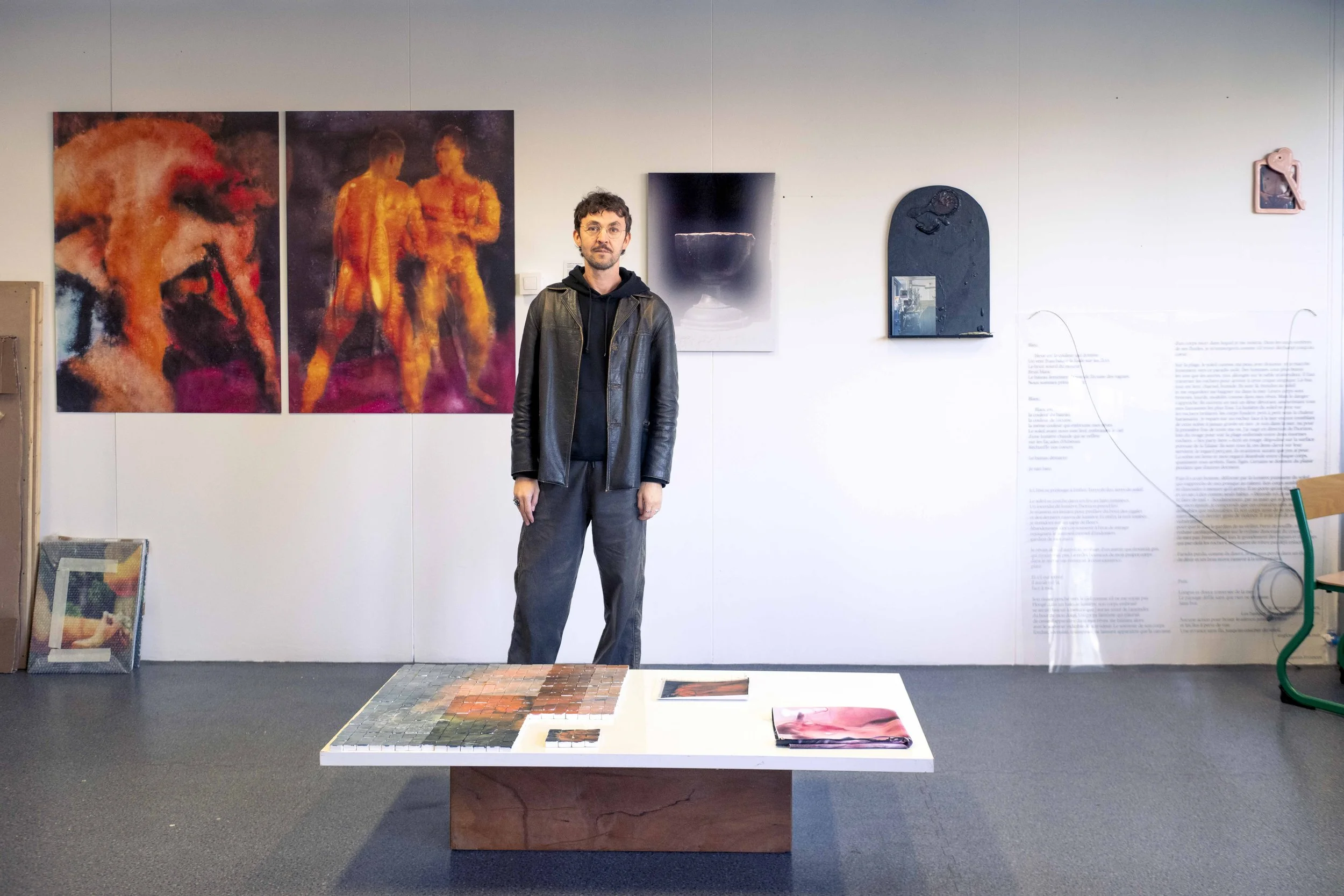Quentin Fromont
We are excited to introduce Quentin, a visual artist and curator!
Graduated from the École Nationale Supérieure des Arts Décoratifs de Paris in 2022, Quentin Fromont is interested in fantasies and how they can create spaces of freedom and exploration of the complexities of intimacy.
Through his images, installations, sculptures and readings, he stages mental spaces where the struggle for survival mingles with the desire to escape. His work explores the vulnerability of bodies in the face of violent experiences, such as sexuality or illness, oscillating between beauty and absence, illness and healing.
He experiments with the materiality and liquidity of the image, using water or saliva. An amalgam of images of male bodies and dreamlike landscapes drawn from archive films and personal recordings. He creates an idealized or hallucinatory vision, revealing bodies in tension, entwined and interpenetrated. In this floating temporality evoking dream or nightmare, the interactions of his spectral presences highlight desire, attention, struggle and violence of the body.
His work has been shown as part of the opening week of the Festival de la photographie de Arles (2023), the Festival Circulation(s) at 104 (2024), 100% L'EXPO at La Villette (2024), as well as in various group exhibitions at Houloc (2023), the Musée Transitoire (2024) and the Galerie Wonzimer in Los Angeles, USA (2024). His work was the subject of a solo show at the Galerie du Crous, and at the Galerie le POCTB in Orleans in November 2024.
He co-curated the group show Et iels vécurent heureu.x.ses at Dragono in Paris (2021), the exhibition Vestiges at 3537 in Paris (2022) and Au-delà de l'horizon at Consulat Voltaire (2023).
Browse available works:
Artist interview:
How would you describe your artistic practice?
My artistic practice revolves around exploring vulnerability, and transformation of the human body. Through video, photography, sculpture, and installation, I construct fragmented narratives where reality and fiction intertwine. My work often takes place in transitional spaces—both physical and mental—such as hospitals, coastal landscapes, or dreamlike states, where bodies are in flux, seeking refuge or dissolving into their surroundings.
What concepts appear consistently in your practice?
My work frequently explores themes of desire, disappearance and resilience. I’m interested in how queer bodies adapt to constraints, whether imposed by illness, social norms or emotional states, and how these constraints generate new forms of imagination. The relationship between care and violence, presence and absence, is also a recurring motif. Mythology, especially figures linked to metamorphosis, and forbidden love, is a recurring reference in my practice. I am particularly drawn to mythological figures like Endymion, the young shepherd eternally asleep in a cave in Arcadia. This myth resonates with my exploration of suspended states and blurred realities It questions what is real or fictional, much like my practice, where images dissolve into misty, uncertain landscapes.
What techniques or materials do you frequently use?
I experiment with printing images using liquid processes such as water transfers on porous surfaces like paper, plaster or fabric. This technique allows me to create images that seem to dissolve, erode or transform, rather like memories or dreamlike visions. The images come from my own collection or from the Internet. I also work with video, using slow, immersive images to evoke altered states of consciousness or a drifting boat. Text is an integral part of my practice, both in the process and in the final form, and can take the form of installation or performance readings.





Quentin Fromont